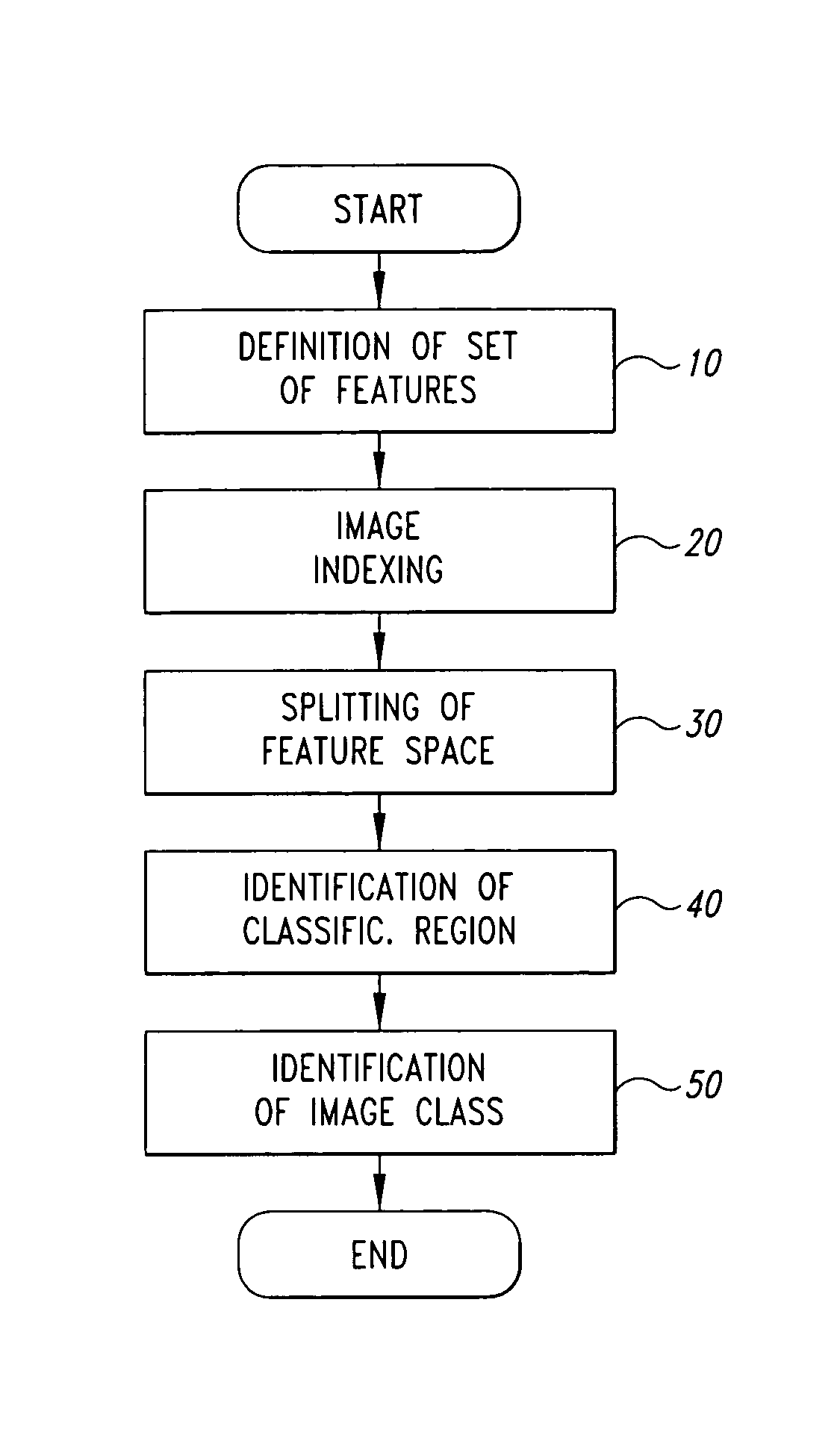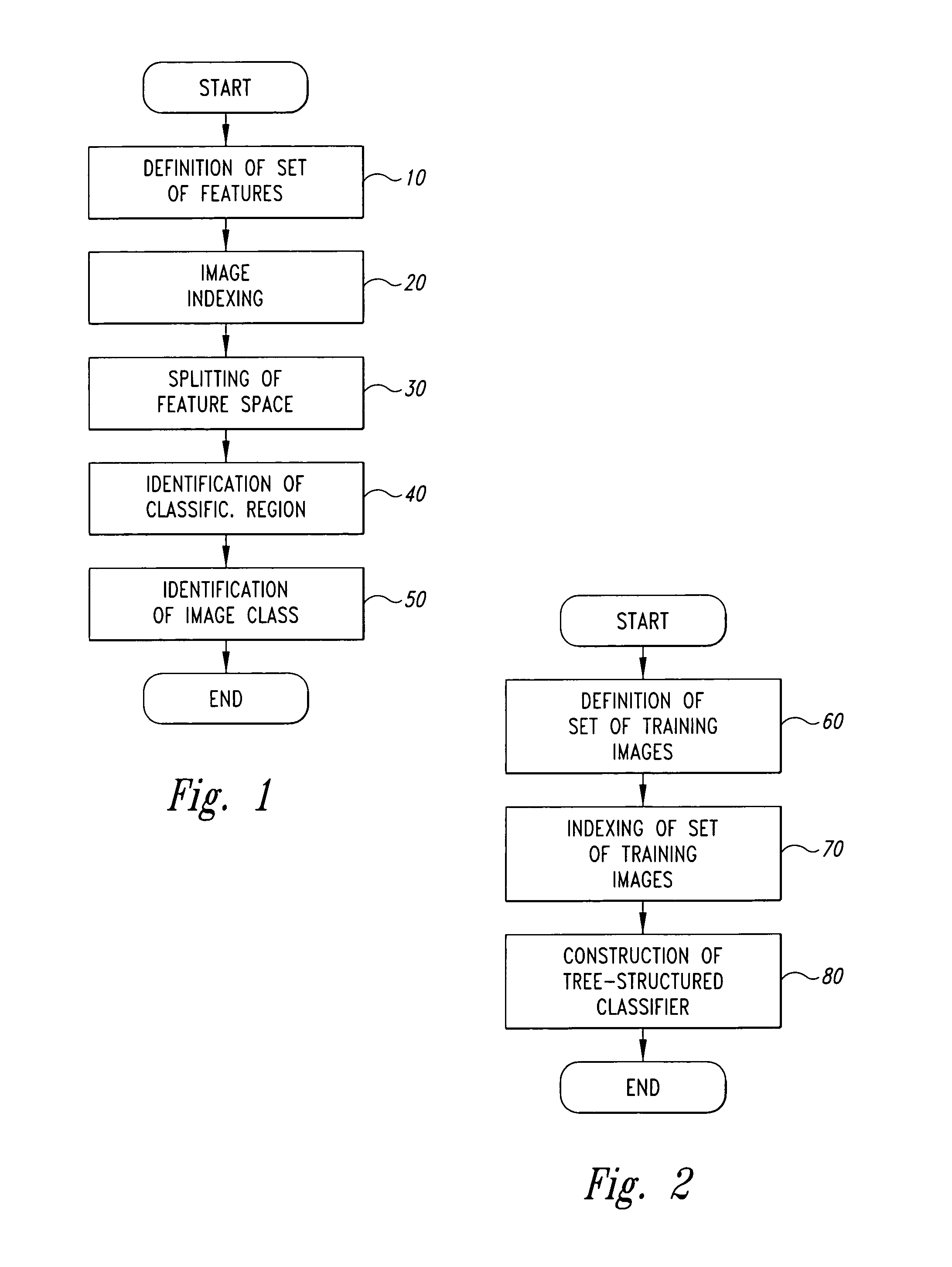Content-based digital-image classification method
- Summary
- Abstract
- Description
- Claims
- Application Information
AI Technical Summary
Benefits of technology
Problems solved by technology
Method used
Image
Examples
Embodiment Construction
[0019]First of all it should be emphasized that in what follows the term “images” indicates not only the complete images, but also the subimages obtained by dividing an image up (image splitting).
[0020]FIG. 1 shows a flowchart relative to the digital-image classification method according to the present invention.
[0021]According to what is illustrated in FIG. 1, the present classification method involves the following steps:[0022]defining a set of N low-level features, which, taken together, describe the semantic content of an image, and which consist of quantities that can be obtained from the image by means of logico-mathematical expressions that are known beforehand, and their choice depends upon the image classes used for the classification (block 10);[0023]indexing the image to be classified, with the purpose of extracting therefrom a feature vector X=[X1, X2 . . . , XN] formed by the values assumed, in said image, by the N low-level features (block 20); and[0024]processing, in ...
PUM
 Login to View More
Login to View More Abstract
Description
Claims
Application Information
 Login to View More
Login to View More - R&D
- Intellectual Property
- Life Sciences
- Materials
- Tech Scout
- Unparalleled Data Quality
- Higher Quality Content
- 60% Fewer Hallucinations
Browse by: Latest US Patents, China's latest patents, Technical Efficacy Thesaurus, Application Domain, Technology Topic, Popular Technical Reports.
© 2025 PatSnap. All rights reserved.Legal|Privacy policy|Modern Slavery Act Transparency Statement|Sitemap|About US| Contact US: help@patsnap.com



